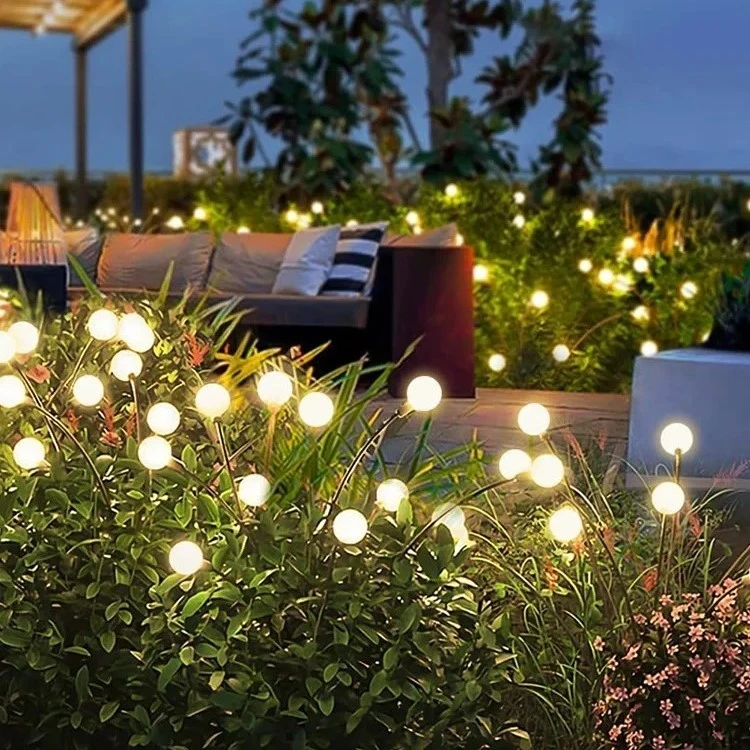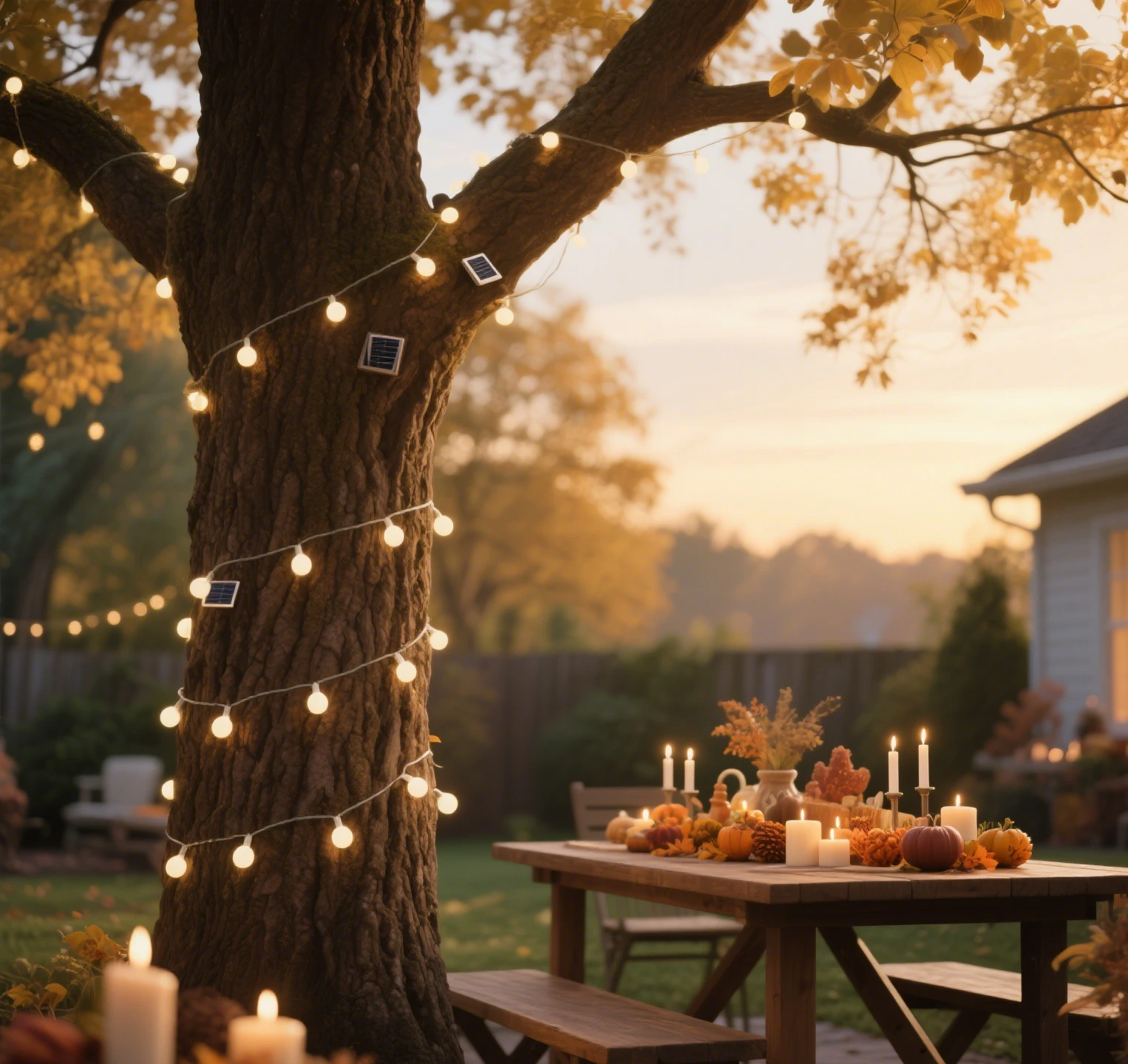Solar garden lights have become a popular choice for homeowners and gardeners seeking sustainable, cost-effective solutions to enhance outdoor spaces. These lights, powered by renewable solar energy, provide aesthetic appeal and functional illumination for pathways, flowerbeds, and patios without increasing energy costs. However, as their use grows, questions arise about their potential effects on the surrounding environment, particularly on plants. Do solar garden lights affect plant growth, health, or behavior? This article delves into the relationship between solar garden lights and plants, focusing on the products themselves—their design, light output, and placement—and how they interact with plant physiology. By exploring scientific principles, product specifications, and practical gardening considerations, we aim to provide a comprehensive guide for gardeners looking to balance illumination with plant health.

Understanding Solar Garden Lights
What Are Solar Garden Lights?
Solar garden lights are standalone outdoor fixtures that use photovoltaic panels to convert sunlight into electricity, stored in rechargeable batteries to power LED or other light sources at night. Key components include:
- Solar Panel: Captures sunlight to generate electricity, typically monocrystalline or polycrystalline for efficiency.
- Rechargeable Battery: Stores energy, usually NiMH (Nickel-Metal Hydride) or Li-ion (Lithium-ion), to power the light.
- LED Light Source: Provides energy-efficient illumination, available in various color temperatures (e.g., warm-white, cool-white).
- Photosensor: Automatically activates the light at dusk and deactivates it at dawn.
- Housing and Mount: Made of plastic, stainless steel, or glass, designed for durability and weather resistance, often with stakes or wall mounts.
Available in forms like stake lights, string lights, lanterns, and floodlights, these products vary in brightness (10–200 lumens), design, and functionality, making them versatile for garden use.
Key Features Relevant to Plants
- Light Spectrum: LEDs emit light in specific wavelengths, measured in Kelvin (K). Warm-white (2700–3000K) mimics natural moonlight, while cool-white (5000–6500K) contains more blue light, potentially influencing plants.
- Brightness and Intensity: Measured in lumens, low-output lights (10–50 lumens) are common for decorative purposes, while brighter models (100+ lumens) are used for security or pathways.
- Operation Duration: Most lights operate 6–12 hours nightly, depending on battery capacity and sunlight exposure.
- Placement and Coverage: Lights are often placed near plants, in flowerbeds, or along pathways, potentially exposing plants to prolonged artificial light.
How Light Affects Plant Growth
To understand the impact of solar garden lights on plants, it’s essential to explore how light influences plant physiology, particularly through photosynthesis, photomorphogenesis, and photoperiodism.
Photosynthesis
Photosynthesis is the process by which plants convert light energy into chemical energy to produce sugars for growth. It primarily occurs in chloroplasts, using red (620–700 nm) and blue (400–500 nm) wavelengths. Natural sunlight provides a full spectrum, but artificial light, like that from solar garden lights, may alter this balance:
- Low-Intensity Light: Most solar garden lights emit low lumens, insufficient for significant photosynthesis, especially compared to daylight (thousands of lumens).
- Spectral Impact: Cool-white LEDs, rich in blue light, may slightly influence photosynthetic activity if plants are exposed for extended periods, but the effect is minimal due to low intensity.
Photomorphogenesis
Photomorphogenesis refers to light-induced changes in plant growth and development, such as seed germination, stem elongation, and leaf expansion. Blue light promotes compact growth, while red light encourages flowering and elongation. Solar garden lights, particularly those with cool-white LEDs, could theoretically affect:
- Seedling Development: Prolonged exposure to blue-heavy light at night might inhibit stem elongation, leading to shorter, bushier plants.
- Leaf Growth: Blue light can enhance chlorophyll production, but the low intensity of garden lights limits this effect.
Photoperiodism
Photoperiodism is the plant’s response to the duration of light and darkness, influencing flowering and dormancy. Plants are classified as:
- Long-Day Plants: Flower when day length exceeds a critical threshold (e.g., spinach, lettuce).
- Short-Day Plants: Flower when day length is shorter (e.g., chrysanthemums, poinsettias).
- Day-Neutral Plants: Flower regardless of day length (e.g., tomatoes, roses).
Artificial light from solar garden lights can extend perceived day length, potentially disrupting flowering in short-day plants or triggering early flowering in long-day plants.
Potential Impacts of Solar Garden Lights on Plants
The effect of solar garden lights on plants depends on their design, placement, and the plants’ specific needs. Below, we explore potential positive and negative impacts, focusing on product characteristics.
Potential Negative Impacts
- Disruption of Photoperiodism:
- Short-Day Plants: Continuous nighttime illumination from solar lights may delay flowering in plants like chrysanthemums or poinsettias, which require long, uninterrupted dark periods. For example, a bright cool-white LED (100 lumens) placed near a poinsettia could prevent its characteristic red bracts from forming.
- Long-Day Plants: Conversely, artificial light may promote premature flowering in plants like petunias, potentially disrupting garden aesthetics or seasonal cycles.
- Evidence: Studies on light pollution suggest that even low-intensity artificial light (e.g., 10–20 lumens) can alter flowering times in sensitive species, though solar garden lights are less intense than streetlights.
- Altered Growth Patterns:
- Cool-white LEDs, rich in blue light, may cause compact growth or reduced stem elongation if plants are exposed nightly. This is more likely with high-lumen lights placed close to seedlings or young plants.
- Anecdotal reports on X mention stunted growth in some garden plants near bright solar lights, though scientific studies are limited.
- Stress from Continuous Light:
- Plants rely on dark periods for processes like respiration and hormone regulation. Prolonged exposure to artificial light, even low-intensity, may cause stress, reducing vigor or increasing susceptibility to pests.
- Tropical plants or those adapted to equatorial climates (e.g., orchids) are less affected, as they tolerate varied light cycles.

Potential Positive Impacts
- Extended Growing Seasons:
- In regions with short growing seasons, low-intensity warm-white lights may slightly extend perceived day length, benefiting long-day plants like lettuce or radishes. However, the effect is minimal due to low lumen output.
- Greenhouse gardeners sometimes use supplemental LED lighting, but solar garden lights lack the intensity for significant growth enhancement.
- Aesthetic Enhancement:
- Solar lights highlight plants’ visual appeal, such as illuminating flowerbeds or accentuating foliage, without direct physiological benefits. Day-neutral plants like roses benefit aesthetically without growth disruption.
- Pest Deterrence:
- Some lights may deter nocturnal pests (e.g., slugs) that avoid illuminated areas, indirectly benefiting plants. However, this depends on light intensity and placement.
Comparison with Other Lighting
Unlike grow lights, designed with high-intensity red and blue LEDs to promote photosynthesis, solar garden lights are primarily decorative. Their low lumen output and limited spectral range make significant impacts on plant growth unlikely, though subtle effects on photoperiodism are possible.
Product Design and Its Role in Plant Impact
The design of solar garden lights plays a critical role in their potential to affect plants. Key factors include:
Light Color and Spectrum
- Warm-White LEDs (2700–3000K): Mimic natural moonlight, with more red light, minimizing disruption to photoperiodism and photomorphogenesis. Ideal for plant-heavy gardens.
- Cool-White LEDs (5000–6500K): Emit blue-heavy light, more likely to attract insects or influence seedling growth, though effects are limited by low intensity.
- Amber or Red LEDs: Rare in solar garden lights but least disruptive to plants, as they align with natural moonlight and avoid blue wavelengths.
Brightness and Intensity
- Low-Lumen Lights (10–50 lumens): Common in stake lights, these have minimal impact on plants due to low intensity, suitable for most gardens.
- High-Lumen Lights (100–200 lumens): Used in floodlights or security lights, these may disrupt sensitive plants if placed nearby, especially short-day species.
Placement and Directionality
- Proximity to Plants: Lights placed within 1–2 feet of plants are more likely to affect growth or flowering, especially if unshielded.
- Shielded Fixtures: Lights with downward-facing LEDs reduce light spillover onto plants, minimizing disruption.
- Coverage Area: Omnidirectional lights illuminate larger areas, increasing the likelihood of affecting multiple plants.
Operation Timing
Lights that stay on all night (6–12 hours) are more likely to disrupt photoperiodism than those with timers or motion sensors, which limit illumination to short bursts.
Mitigation Strategies for Plant-Friendly Solar Garden Lights
To balance garden illumination with plant health, gardeners can adopt product-specific strategies:
Choose Plant-Friendly Designs
- Opt for Warm-White LEDs: Select lights with 2700–3000K color temperatures to minimize blue light exposure, reducing impacts on seedlings and short-day plants.
- Use Low-Lumen Lights: Choose decorative lights (10–50 lumens) for flowerbeds to limit light intensity near plants.
- Select Shielded Fixtures: Use lights that direct illumination downward to avoid exposing plant foliage to artificial light.
Strategic Placement
- Avoid Sensitive Plants: Place lights away from short-day plants like chrysanthemums or poinsettias to prevent flowering disruption.
- Use in Day-Neutral Areas: Position lights near day-neutral plants like roses or shrubs, which are less affected by light changes.
- Maintain Distance: Keep lights at least 2–3 feet from young or sensitive plants to reduce exposure.
Smart Controls
- Incorporate Timers: Use lights with timers to turn off after a few hours, preserving dark periods for plants.
- Install Motion Sensors: Lights that activate only when needed reduce overall light exposure, benefiting photoperiod-sensitive species.
Monitor Plant Health
- Observe Growth Patterns: Check for signs of stress, such as stunted growth or delayed flowering, and adjust light placement if needed.
- Rotate Light Locations: Periodically move lights to prevent prolonged exposure to specific plants.
Case Studies and Observations
Flowerbed Illumination in Suburban Gardens
In suburban gardens, low-lumen warm-white stake lights (e.g., GIGALUMI Solar Pathway Lights) are commonly used in flowerbeds. Gardeners report no significant growth issues with day-neutral plants like roses or hydrangeas, but some note delayed flowering in chrysanthemums near bright lights.
Pathway Lighting Near Seedlings
Anecdotal posts on X mention compact growth in seedlings near cool-white solar lights, likely due to blue light exposure. Switching to warm-white LEDs or moving lights farther away resolved the issue.
Urban Rooftop Gardens
In urban settings with high ambient light, solar garden lights have minimal additional impact on plants, as background light pollution overshadows their effects. Day-neutral herbs like basil thrive regardless of lighting.
Balancing Aesthetics and Plant Health
Solar garden lights enhance garden aesthetics and safety, but their impact on plants is generally minimal due to low intensity and limited spectral influence. However, careful product selection and placement can prevent subtle disruptions, particularly for photoperiod-sensitive plants. Gardeners can enjoy the benefits of solar lighting—sustainability, low cost, and ease of use—while ensuring healthy plant growth.
Recommendations for Manufacturers
- Develop Plant-Safe LEDs: Invest in amber or warm-white LEDs tailored for gardens with sensitive plants.
- Incorporate Smart Features: Standardize timers and motion sensors to reduce nighttime light exposure.
- Provide Guidance: Include plant-friendly usage tips in product manuals, such as recommended distances from flowerbeds.
Recommendations for Gardeners
- Select Appropriate Lights: Choose low-lumen, warm-white lights for areas near plants, especially short-day species.
- Plan Placement: Position lights to highlight pathways or non-sensitive plants, avoiding direct illumination of seedlings or flowering plants.
- Monitor and Adjust: Regularly check plant health and adjust light placement or settings to mitigate any observed effects.
Conclusion
Solar garden lights have a limited but notable potential to affect plants, primarily through disruptions to photoperiodism or subtle influences on growth patterns. Their low-intensity output means they are unlikely to significantly impact photosynthesis, but cool-white LEDs or high-lumen lights placed near sensitive plants can delay flowering or alter development. By choosing warm-white, low-lumen, shielded lights and using smart placement and controls, gardeners can minimize these effects while enjoying the aesthetic and environmental benefits of solar lighting. With thoughtful product design and mindful usage, solar garden lights can illuminate outdoor spaces without compromising the health and beauty of the plants they showcase.

Comments